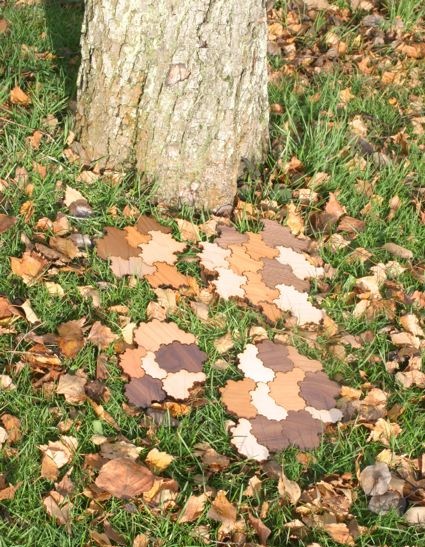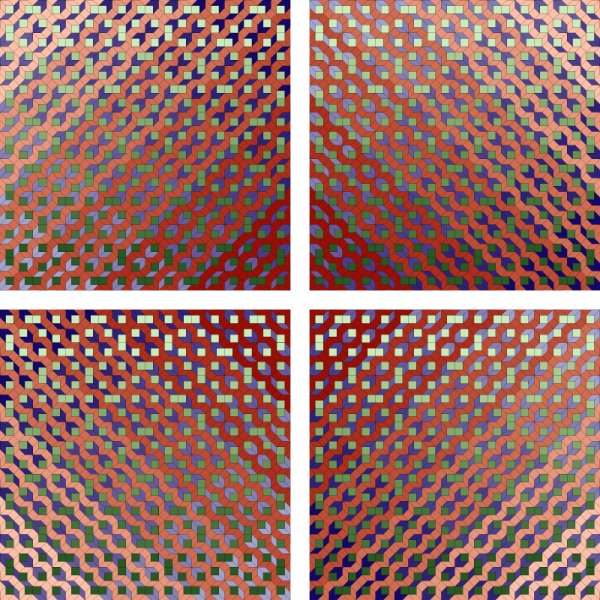Edmund Harriss
"Nautilis and Conch"
Laser Cut wooden tiles, within 12" X 12" the tiles need to lie flat on the table and can be positioned in many ways, 2006.

These two tiles represent a break-
through in the study of Rauzy fractals. These are certain shapes
related to substitution rules using letters. There is an extensive
theory in the case where the scaling of the substitution rule was a
PV (sometimes called Pisot) number, these are real algebraic numbers
greater than one all of whose algebraic conjugates have absolute
value less than one. These tiles and their associated tilings were
the first example of a dual using a non-PV number. They were
discovered by the artist in conjunction with Pierre Arnoux, Maki
Furukado and Shunji Ito.
"Ammann Squares"
Printed on canvas, 2' X 2', 2006.

The Ammann-Beenker tiling is the
eight-fold sibling of the more famous, five-fold Penrose rhomb
tiling. It was discovered independently by R. Ammann and F.
Beenker.Like the Penrose tiling, the Ammann-Beenker can be
constructed by both a substitution rule and as a slice of a higher
dimensional lattice. This picture and Ammann Squares try to explore
these two methods in a visual manner. In this picture the scaling
symmetry given by the substitution rule is considered.
"Ammann Scaling"
Printed on canvas, 2' X 2', 2006.

The Ammann-Beenker tiling is the eight-fold sibling of the more famous, five-fold
Penrose rhomb tiling. It was discovered independently by R. Ammann and F. Beenker.Like
the Penrose tiling, the Ammann-Beenker can be constructed by both a substitution
rule and as a slice of a higher dimensional lattice. This picture and Ammann
Scaling try to explore these two methods in a visual manner. In this picture
the joined lines of tiles, that show the higher dimensional origins are considered.
Edmund Harriss
Postdoctoral Research Fellow, Imperial College London
"I am a professional mathematician, interested in the images that can be generated using mathematics and how those can be made to look beautiful. I am especially interested in ways in which these images can be used to show the beauty of mathematics in an accessible manner."